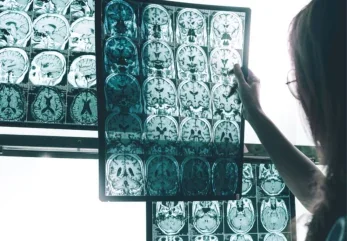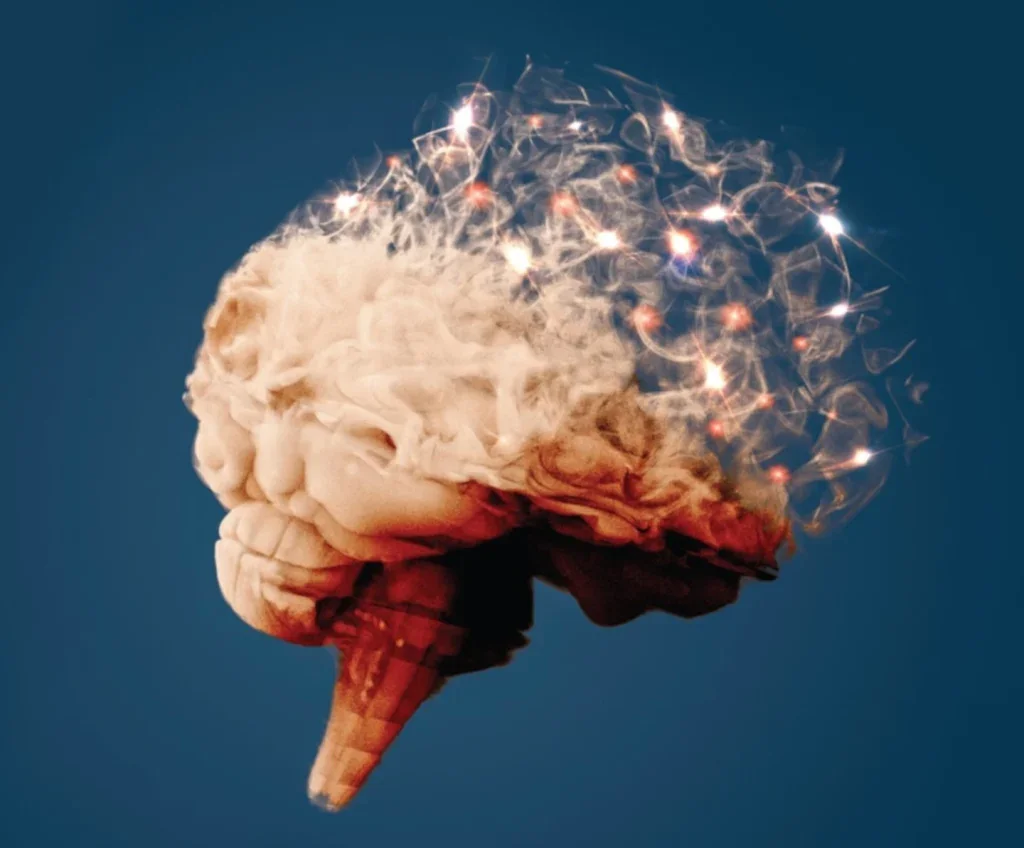
Alzheimer’s disease (AD), the most common form of dementia, affects millions globally. Its insidious onset and progressive nature often result in delayed diagnosis, leaving patients and their families grappling with uncertainty. First defined in 1906, Alzheimer’s disease originally could only be diagnosed by assessing symptoms, with confirmation only through an autopsy. As new methods have emerged over the past century, traditional diagnosis of Alzheimer’s has relied on a combination of cognitive tests, neurological evaluations and advanced imaging techniques. However, despite how far Alzheimer’s diagnostics have come, these methods can be invasive, time-consuming and inaccessible to many.
While over 55 million people are estimated to be living with dementia, 60–70% of which are caused by Alzheimer’s disease, according to WHO in 2019, 75% of these dementia cases go undiagnosed worldwide. This rises to 90% in lower-middle income countries, as reported in Alzheimer’s Disease International’s World Alzheimer’s Report 2021. Researchers predict that by 2050, over 152 million individuals will have dementia, with an official diagnosis taking up to 2.8 years. However, recent developments in diagnostics have the potential to alter this situation and provide fresh hope for early detection and management.
Diagnosing Alzheimer’s
Alzheimer’s has traditionally been diagnosed using a multi-step process. Doctors start by going over the patient’s medical history and using tests like the Montreal Cognitive Assessment (MoCA) or the Mini-Mental State Examination (MMSE) to evaluate cognitive function. Changes in the structure and function of the brain can be detected with the use of positron emission tomography (PET) scans and magnetic resonance imaging (MRI). For example, amyloid plaques, a defining feature of Alzheimer’s disease pathology, can be found using PET scans. Furthermore, determining the amounts of tau and amyloid-beta proteins in cerebrospinal fluid (CSF) provide vital information about how the illness develops.

While these methods effectively confirm a diagnosis, they are not without their drawbacks. Neuroimaging is costly and often unavailable in resource-limited settings, while lumbar punctures for CSF analysis are invasive and uncomfortable for patients. Moreover, “Cognitive impairment can have many different causes and patients with Alzheimer’s disease brain pathology often have multiple issues that are causing or contributing to their cognitive impairment,” explains Suzanne E. Schindler, MD, PhD, associate professor of neurology at Washington University School of Medicine, who leads the Fluid Biomarker Core for the Knight Alzheimer’s Disease Research Center and has facilitated several collaborative research projects related to the blood biomarkers of Alzheimer’s.
“If we perform a thorough evaluation, we can sometimes find reversible causes that are contributing to cognitive symptoms in patients who also have Alzheimer’s disease pathology. These issues can be as simple as sleep apnoea or medication side effects. This is why it’s important not just to perform a test for Alzheimer’s disease pathology and, if positive, to attribute all cognitive symptoms to Alzheimer’s – the full diagnosis is often much more complicated.”
In recent years, the discovery of biomarkers has revolutionised the understanding and diagnosis of Alzheimer’s. Amyloid-beta, tau, and neurofilament light chain (NfL) proteins are examples of biomarkers, which are quantifiable indications of biological processes, in the context of Alzheimer’s disease. These chemicals are essential to the development of the illness and are now able to be identified with previously unprecedented precision.
A step up in diagnostics
Blood-based biomarker testing is arguably the most exciting advancement in Alzheimer’s diagnoses. In contrast to conventional techniques, these tests are accessible, affordable and less intrusive, which makes them perfect for widespread screening and early detection. According to Niklas Mattsson-Carlgren, MD, PhD, associate professor at the Clinical Memory Unit at Lund University, and neurologist at the Memory Clinic, Skåne University Hospital, “Blood biomarkers are developing very strongly and are able to reach diagnostic performance which is very close to or noninferior to what can be achieved with more expensive or invasive methods with CSF and PET.”
“Accurate blood tests for Alzheimer’s disease pathology are becoming increasingly available,” says Schindler. “They provide very similar information to tests we have used in research for decades, such as sophisticated imaging scans and cerebrospinal fluid tests, but the blood tests are much easier to perform.”
Phosphorylated tau (p-tau), which indicates abnormal tau protein aggregation in the brain, is one promising biomarker. Research has indicated a substantial correlation between Alzheimer’s pathology and blood levels of p-tau217. In a recent study led by Schindler, the accuracy of six commercial blood tests that measure blood levels of one or more Alzheimer’s biomarkers was compared. One of which, p-tau217, was exceptionally accurate in four of the tests that used the biomarker, meeting the standard of cerebrospinal fluid tests. Mattsson-Carlgren’s research has also outlined the promise of p-tau217, demonstrating its high accuracy in diagnosing Alzheimer’s and potential to outperform traditional diagnostic tools. Another study published in Nature Medicine by Mattsson-Carlgren et al. also found that plasma pTau 181 levels were able to distinguish Alzheimer’s disease from healthy controls with high accuracy.
Patients with cognitive concerns can undergo a comprehensive evaluation that includes their clinical history, neurological examination and cognitive testing, routine laboratories and a brain MRI, for example. But for patients seeking a more certain diagnosis, explains Schindler, “or who wish to be considered for antiamyloid treatments, we perform biomarker testing for Alzheimer’s disease”, she adds. “Although not widely available or reimbursed yet in most health care systems, high-performing blood tests are close to being implemented,” adds Mattsson-Carlgren.
Innovating imaging
While blood-based tests are gaining traction, imaging technologies continue to evolve. Innovations in PET imaging, such as tau-specific tracers, offer more accurate insight into the course of the disease. “Tau PET and Amyloid PET remain highly valuable to identify and characterise Alzheimer’s disease, including the spread of pathology over the brain, even at stages where fluid biomarkers have reached their ceilings,” explains Mattsson-Carlgren.
Additionally, machine learning algorithms are being integrated with imaging to enhance diagnostic accuracy and predict patient outcomes. Artificial intelligence (AI) is also transforming MRI analysis. AI algorithms can identify subtle brain changes associated with Alzheimer’s, such as hippocampal atrophy, long before these changes are visible to the human eye. These advancements not only improve diagnostic precision but also enable personalised treatment plans.
One of the mainstays of Alzheimer’s research has always been genetic testing. Mutations in genes including APP, PSEN1 and PSEN2 are linked to earlyonset familial Alzheimer’s disease, while the APOE-ε4 allele increases the risk of late-onset Alzheimer’s. Recent advancements have made genetic testing more accessible, allowing anyone with a family history of Alzheimer’s to assess their risk. However, “a positive result does not guarantee disease onset but highlights the importance of regular monitoring and preventive measures,” says Mattsson-Carlgren.
In response to these innovations, diagnostic guidelines for Alzheimer’s have undergone significant revisions. The International Working Group (IWG) and the National Institute on Aging-Alzheimer’s Association (NIA-AA) now emphasise a biomarker-based approach. The updated criteria include individuals with normal cognition who test positive for biomarkers, recognising that Alzheimer’s pathology begins years before symptoms manifest. The WHO has also published preferred product characteristics for blood tests, aiming to standardise their development and ensure global accessibility. These guidelines prioritise tests that are affordable, accurate, and adaptable to diverse healthcare settings.
Giving patients a chance
Early diagnosis is critical for optimising Alzheimer’s care. Identifying the disease in its preclinical stage enables patients to access emerging therapies targeting amyloid-beta and tau proteins, implement lifestyle changes such as exercise and cognitive training that may delay disease progression, and participate in clinical trials, contributing to research and potentially benefiting from cutting-edge treatments.
Blood-based biomarker tests are particularly transformative in this regard. Their simplicity and scalability make routine screening feasible, paving the way for population-wide early detection programmes. “With blood biomarkers of amyloid and tau, more accurate diagnosis can suddenly be possible also in settings without access to CSF or PET, such as primary care contexts, or low-resource contexts,” says Mattsson-Carlgren.
Despite these advancements, several challenges remain. Blood-based tests must undergo rigorous validation to ensure their reliability across diverse populations. While less expensive than imaging, these tests must be affordable and integrated into public health systems to achieve widespread impact. Given the need to help patients and their families and the lack of curative treatments, early diagnosis also presents an ethical concern regarding disclosure.
Looking ahead, researchers are exploring novel biomarkers, such as inflammatory markers and synaptic proteins, to capture the full spectrum of Alzheimer’s pathology. Advances in multi-omics – integrating genomics, proteomics and metabolomics – hold promise for uncovering new diagnostic targets. Mattsson-Carlgren foresees “the widespread availability of high-performing blood biomarkers, coupled with strategic PET or CSF in those with indeterminable risk based on blood biomarkers, and coupled with decisions to start, stop, restart, or change treatment strategies”. Schindler is hopeful, too, for treatments that can forestall cognitive decline in individuals with biomarkers of Alzheimer’s disease. “I expect that we will be able to use blood biomarker tests to predict approximately when cognitively normal individuals are likely to develop symptoms of Alzheimer’s disease,” she adds.
The field of Alzheimer’s diagnosis is undergoing a seismic change. These developments, which range from sophisticated biomarker tests to conventional cognitive evaluations and imaging, innovations offer unprecedented opportunities for early detection and intervention. The future of Alzheimer’s care appears to be more promising than ever as specialists like Mattsson-Carlgren and Schindler continue to push the limits of research. By embracing these advancements and addressing the accompanying challenges, a new era of precision medicine is on the cusp of transforming the diagnosis and treatment of Alzheimer’s.





